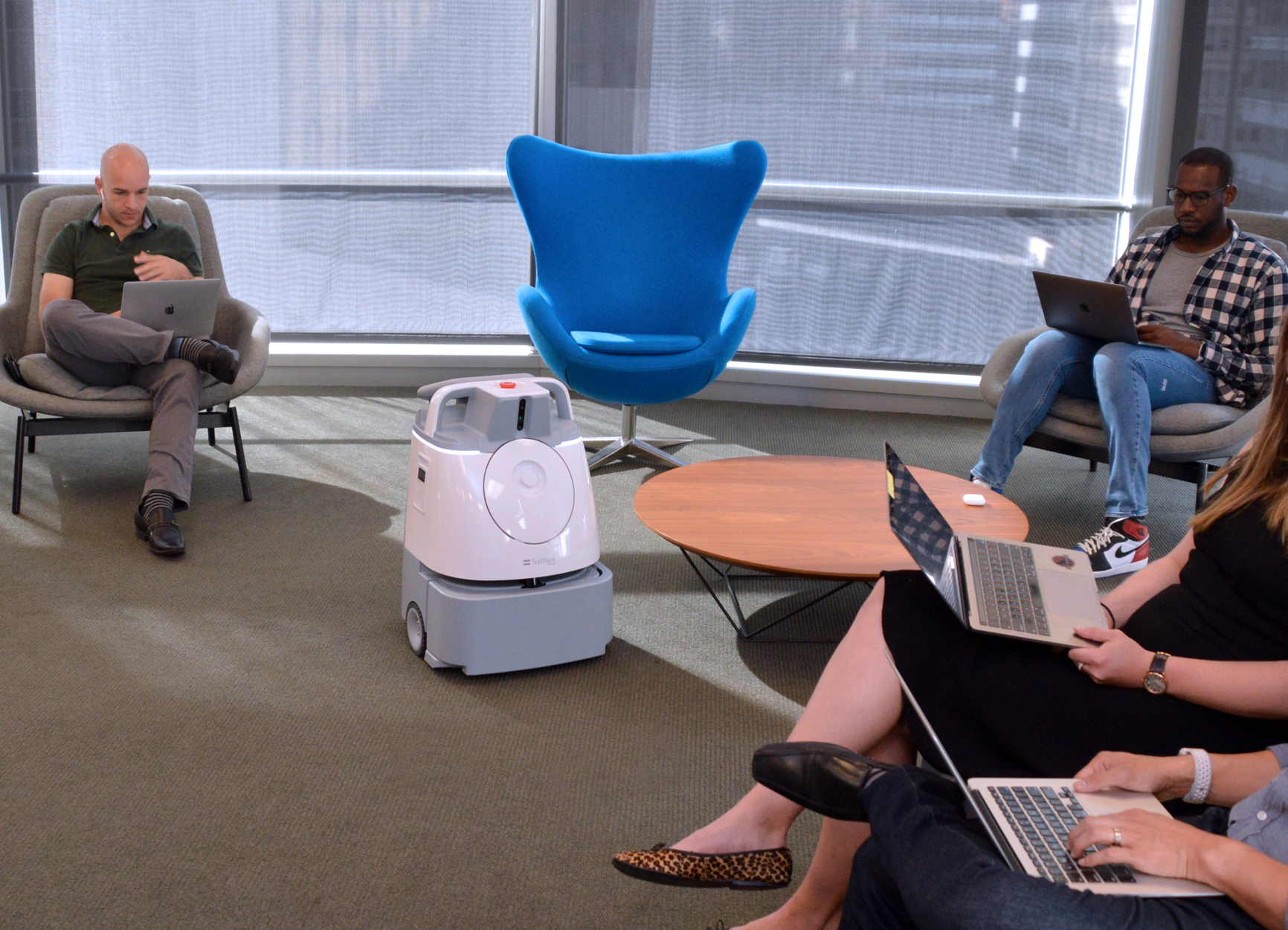Once confined to the realm of science fiction, robots are becoming more and more prevalent in our everyday lives. While collaborative robots were part of many organizations' future roadmaps pre-pandemic, COVID-19 created new challenges that accelerated the adoption of robotics and automation. Today, robots have emerged as a new reality in our daily experiences.
As employees return to physical offices, travelers resume vacations, and customers venture back into brick and mortar stores, the growing presence of robots in our midst will be unmistakable. Some readers may find this new reality unsettling, maybe even a little dystopian. On the flip side, others find these robots to be cute and welcoming, following them around and giving them names and even outfits to wear as they work. Whatever the perception, consumer-facing robots are designed to elevate and enrich the human experience.
We’re rapidly moving towards a future of work where more robots take care of more mundane, time-consuming, and injury-prone tasks, giving humans more time to spend on meaningful, engaging, and fulfilling roles. See our recent blog post to get the facts about common misconceptions surrounding collaborative robots.
In this blog post, we give you an up-close and personal look at what it’s like to work and interact with robots day-to-day.
Working with Robots
Working with robots has become a fun and engaging experience. Far from the cold, sterile machines, you might be imagining, most robots that interface directly with people are small, interactive, and approachable. You might even consider them cute. Many have names--like Whiz, our commercial robot vacuum. Humanoid robots like Pepper from SoftBank Robotics can seem uncanny at first, but their friendly design invites people to start a conversation naturally.
Cleaning robots, in particular, have experienced a boom in popularity during the pandemic, so they’re some of the first you’re likely to encounter in the real world. For example, companies like SoftBank Robotics, Xenex, and Brain Corp. have developed “friendly” cleaning robots that help companies create cleaner, safer, and healthier environments for customers and staff. For example, Whiz (SoftBank Robotics) can independently vacuum large carpeted spaces like foyers and hallways in half the time than manual vacuuming. Meanwhile, LightStrike (Xenex) is a UV disinfection robot that removes pathogens from a room in as little as 10 minutes.
These robots work autonomously, freeing up cleaning teams to do more engaging and value-add activities while offloading monotonous tasks with repetitive movements that can cause strain and injury. Staff members are glad to swap these activities for more interesting (and ergonomic) work.
Reactions to Robots in the Real World
Reactions to people-facing robots are overwhelmingly positive. Staff and customers alike are immediately drawn to these robots; people are curious about what the robots do and how they work. For example, many people enjoy walking out in front of Whiz to test out the LiDAR sensors that help Whiz navigate and avoid obstacles. It’s a fun, interactive experience.
More importantly, these cleaning robots give people the confidence to return to everyday life because they’re a visual confirmation of a business’s commitment to health and safety. We recently asked some of our customers why that is. We asked, “Why does a cleaning robot make returning to a space feel safer?”
Here are a few of their responses:
“I like the idea of the continuous clean. I still have concerns with the contact of other people.”
“Evidence that the space will be cleaner and safer is important to me.”
“I know my employer is committed to enhanced cleaning measures.”
“There’s a visual verification that some kind of cleaning is happening.”
Overall, robots play a significant role in getting the world back to normal, and they’re receiving a warm welcome.
Becoming a Robot Manager
Another benefit of robots in the workplace is that they’re creating new and existing jobs. For some employees, this might mean taking tedious tasks off their plate while letting them focus on deep cleaning and detail work. For staff who want to expand their skill-set and work with tech hands-on, these robots also create an exciting opportunity to assume the robot manager’s role. Even though cleaning robots like Whiz can move around independently, they still need to be managed to get the most value out of the technology.
For example, a robot manager needs to understand how the robot works, including learning about LIDAR and other sensors. (Fun fact: this is the same technology used in autonomous cars!) Robot managers gain new technical skills and mechanical knowledge needed to troubleshoot problems and make easy fixes. With Whiz Connect, robot managers can access near-time data and analytics dashboards to help internal teams identify new ways to improve cleaning efficiency.
Robot managers become experts in the day-to-day operations, and might even become experts in the robots themselves - able to take them apart and put them back together as well as the manufacturer.
Cleaning robots like Whiz are incredibly easy to own and operate. However, just like air purifiers and HVAC systems, they still need routine care and attention to keep them in shape and delivering the highest quality results. Therefore, a robot manager will also be responsible for maintaining the robot, including swapping out the accessories (like dust bags, HEPA filters, and brushes) and restarting after software updates to keep the robot running efficiently. The HEPA filters are essential to replace frequently since these filters remove dust and contaminants from the air. Similarly, switching out the brushes to ensure that the robot can effectively grab and sweep particles and grime out of the carpets and floors and into the vacuum and HEPA filter.
Most robots have some accessories or moving parts that need regular inspection or action, as well as needing their exteriors to be wiped down for dust or touchscreen touching.
Ready for a Robot?
Cleaning robots offer an excellent opportunity for workers to maintain manageable workloads, elevate their roles within the team, and learn new skills along the way. Not to mention, robots are fun to work with!
Contact us today to learn more about how Whiz can help you level up your cleaning game in 2021.






